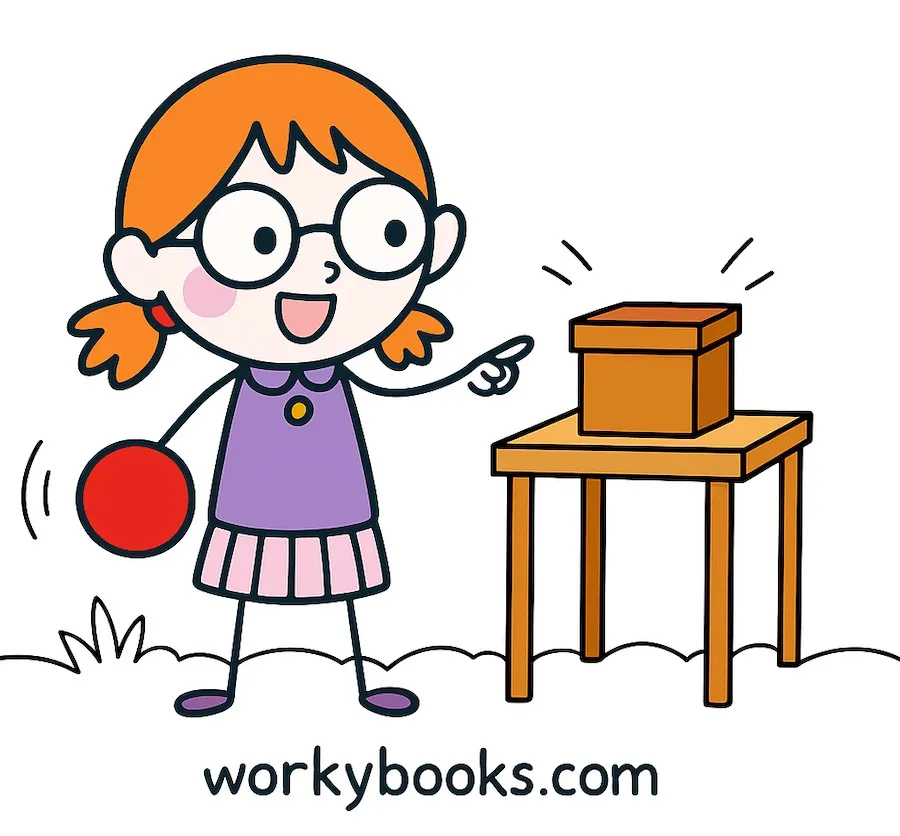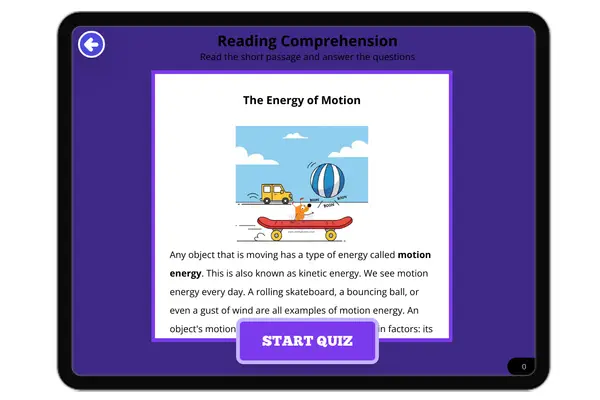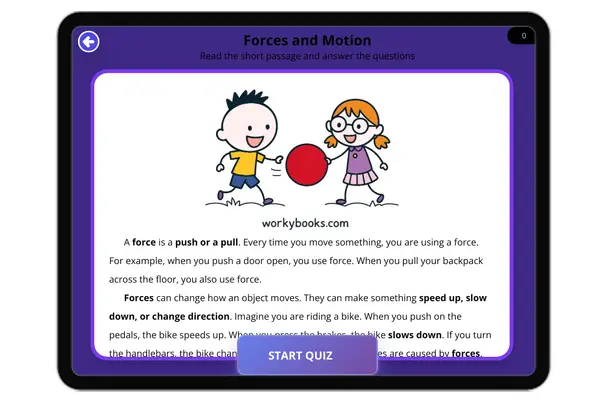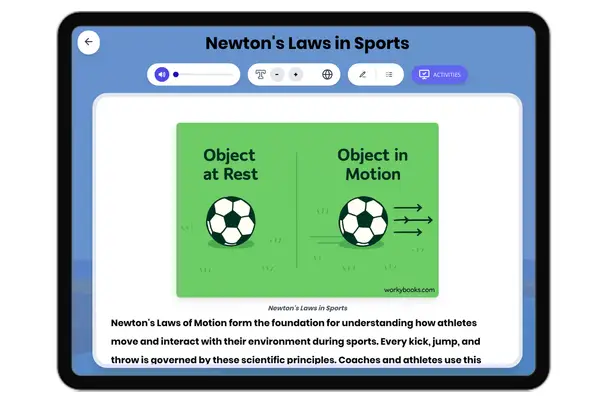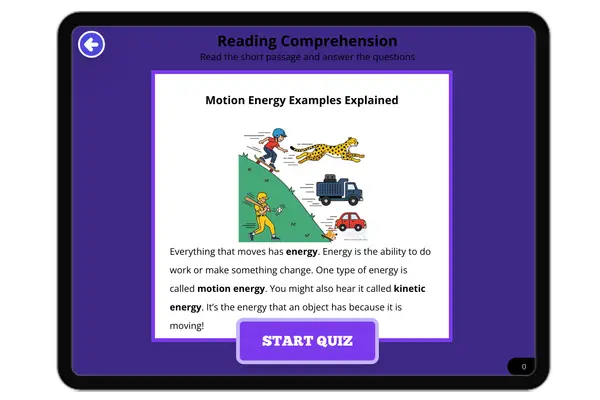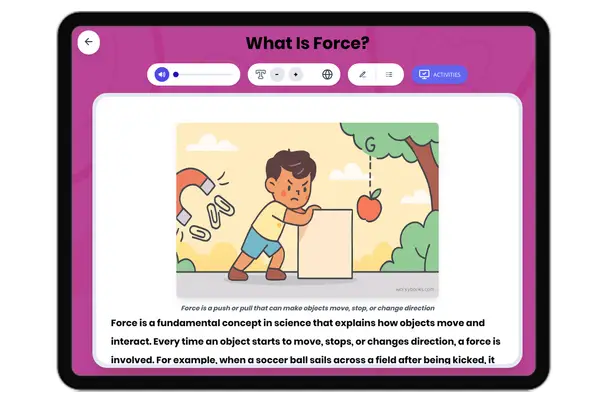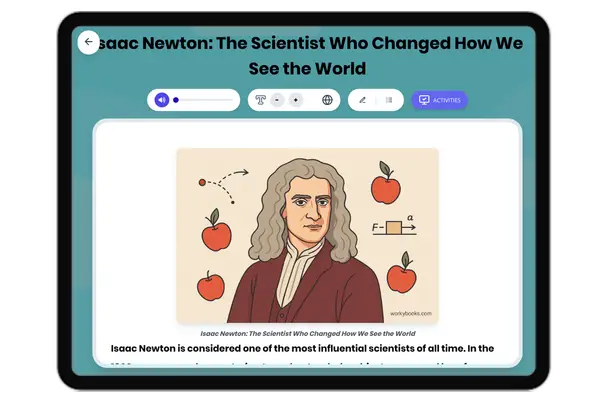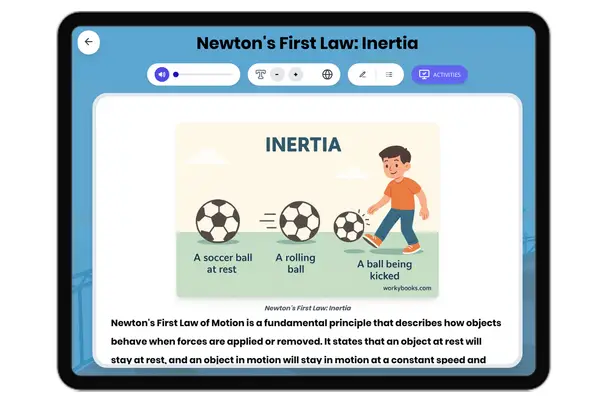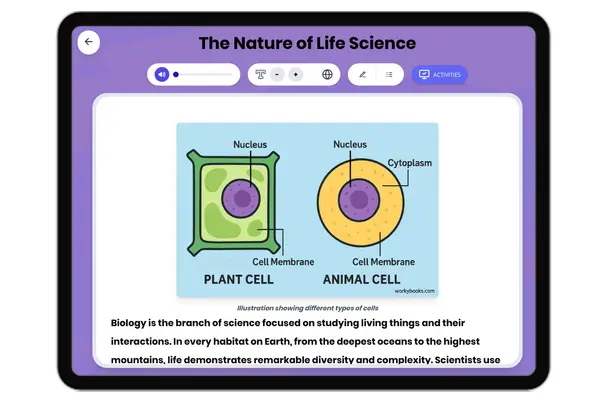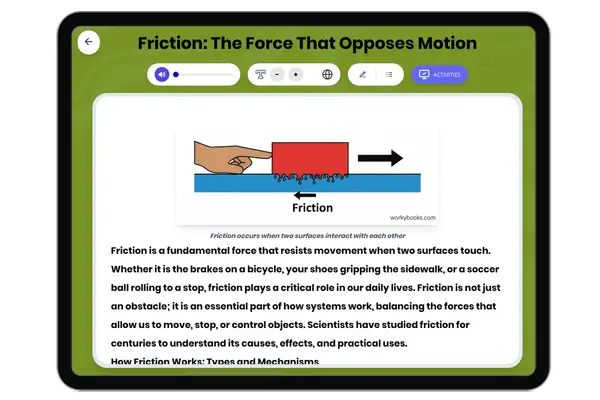What is Position? — Reading Comprehension
Premium Resource
Grades
- 3
- 4
- 5
- 6
PRINT+DIGITAL RESOURCE
This learning resource is available in interactive and printable formats. The interactive worksheet can be played online and assigned to students. The Printable PDF version can be downloaded and printed for completion by hand.
About This Reader
This NGSS-aligned 4th grade passage explains the concept of position in clear, simple language for young learners. Position tells us where something is, and it is described by comparing it to other objects, such as a ball under a table or a book on top of a desk. Students learn how reference points like the ground or a tree are used to describe an object’s position accurately. The passage connects real-life examples, such as moving around a classroom, with scientific ideas to build understanding. It also explains how GPS satellites use position to locate us anywhere on Earth, making the concept both practical and exciting. The text supports NGSS standard PS2.A: Forces and Motion by showing that understanding “where” comes before describing “how” something moves. Fun facts, relatable examples, and structured multiple-choice questions across different Depth of Knowledge levels make this passage engaging and educational. Audio integration supports all learners, including visual and auditory learners. Keywords include position, NGSS PS2.A, reference point, and forces and motion, ensuring the content is optimized for search and easy for teachers and parents to find.
Perfect For:
👩🏫 Teachers
- • Reading comprehension practice
- • Auto-graded assessments
- • Literacy skill development
👨👩👧👦 Parents
- • Reading practice at home
- • Comprehension improvement
- • Educational reading time
🏠 Homeschoolers
- • Reading curriculum support
- • Independent reading practice
- • Progress monitoring
Reading Features:
📖
Reading Passage
Engaging fiction or nonfiction text
❓
Comprehension Quiz
Auto-graded questions
📊
Instant Feedback
Immediate results and scoring
📄
Printable Version
Download for offline reading
🔊
Read Aloud
Voice-over with word highlighting


